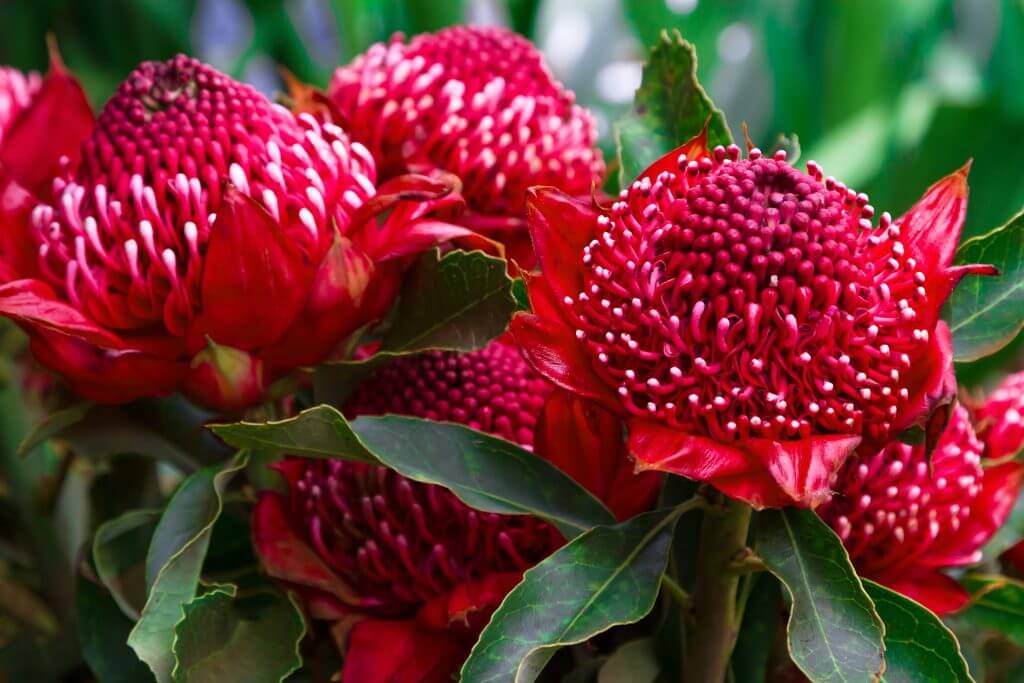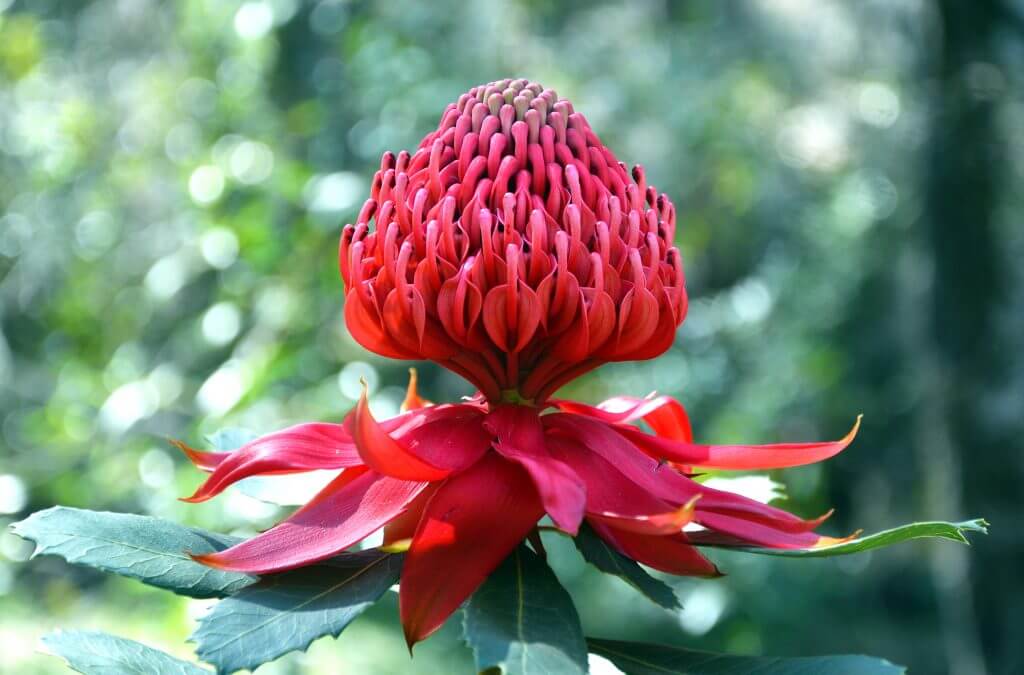Waratah is such a gorgeous plant, and its spectacular floral displays are wonderful additions to the garden.
The colourful blooms attract bees and birds, adding character to your landscape not just with the flora, but with lively animal and insect activities as well.

The Basics of Waratah
Waratah or Telopea is a genus of large shrubs and small trees native to Australia, particularly in the south-eastern parts of New South Wales, Victoria, and Tasmania.
The name waratah is from the Eora Aboriginal people who were the original inhabitants of the Sydney area.
There are five species of waratah, the most popular of which is T. speciosissima, known for its bright red flowers, as well as for being the NSW state emblem.
Waratahs can grow up to about 14 feet (4 metres)
The waratah blooms are inflorescence or a cluster of flowers in one stem, which are arranged spirally.
The waratah inflorescence can range from 2.5 to 6 inches (6 to 15 cm) in diameter, with coloured bracts at the base and can be about 4 to 8 inches (10 to 20 cm) long.
The flowers come in different colours such as red, pink, yellow, and white.
The waratah’s dark leathery leaves are arranged spirally, with either entire or serrated margins. They are about 5 to 10 inches (13 to 25 cm) long.


Planting Your Waratah
Waratah has been known to be challenging to plant and grow. This plant requires specific soil and weather conditions.
They prefer soils that are sandy loam and would do very well in the altered environmental conditions following a fire.
However, there are newer cultivars that can be more forgiving and relatively easier to grow, but still quite a challenge to the novice.
You can plant waratah from cuttings or seed (stored or fresh).
Choose a place where your waratah will get full sun to part shade but protected from the afternoon sun.
Since waratahs prefer sandy loam soil, mix gypsum if your soil is clay-based.
Measure the root ball and dig just as deep, but twice as wide.
Make sure that you do not disturb the roots as you remove the waratah from the pot.
Place it carefully in the hole and backfill. Firm down the soil and form a well around the waratah plant by making a raised ring around it—water well.
Put a thin layer of organic mulch around the base but being careful not to put mulch near the trunk.
If you are planting waratah in a container, make sure that the pot or container is twice the size of your plant.


Caring for Your Waratah
Waratahs like well-draining soil and will not tolerate soggy soil conditions. Make sure that there is no waterlogging in the container or on the ground where your waratah is planted.
Waratah also loves the sun so make sure that it gets plenty during the day.
Make sure to prune back the waratah after flowering to promote new shoots and growth each year.
Waratahs also do not do well with competing vegetation; that is why it is better planted in containers or away from other plants in the garden.


Common Problems with Waratah
Waratahs encounter different issues even at the seedling stage.
It is prone to damping off or the death of seedlings due to different fungi which could be present in the seed before germination. For this reason, waratah seeds should be treated with fungicide before storage.
Bract browning is another issue with waratahs. The floral bracts will discolour as a result of sun damage or windburn.
The most destructive waratah pest is the macadamia twig girdler or Neodrepta luteotactella. Young waratahs are prone to the infestation, where the macadamia twig girdler’s larvae eat at the leaf or branch fork. Inadequate drainage can also cause fungal infections in the waratah and cause root rot.
[elementor-template id=”4604″]
[elementor-template id=”6387″]
